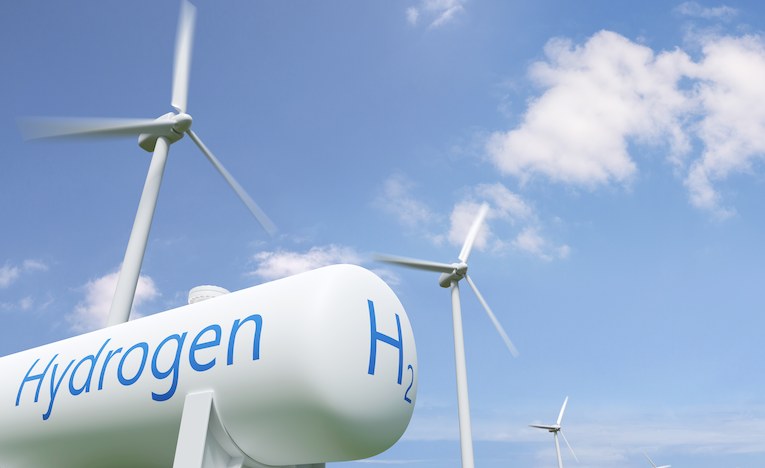Recently, Namibia has been bustling with a new kind of energy, and I don’t just mean oil and gas – I mean green technology. We have seen discourses in social media, panel discussions and keynote speeches on how green hydrogen is moving forward to becoming one of Namibia’s biggest exports.
Given the incredible 54% unemployment rate, it is not surprising that young Namibians are actively pursuing opportunities to improve their careers and skills in this promising sector.
When Green Hydrogen debuted in headlines in 2021, many of us were unaware of the possibility it held. It seemed like an innovative concept that was out of reach for the public, but things have changed dramatically over the past few years. Namibia has made real progress at major milestones with the Green Hydrogen Council, Osibera in Hylon, Clean Energy Pilot Fuel Station, Synthetic Fuel (e-kerosene) and the launch of Hyfen Hydrogen Skills – an initiative that assures the talent of Namibians who actively map all fields – an initiative to win first hand.
These are more than just policy proposals. They are doors open for Namibians. As someone who has recently returned from a master’s degree in energy and climate policy from the University of Sussex, I have wondered how it can contribute meaningfully to this green hydrogen economy. My paper examined the survival rate of green hydrogen in improving energy security in Namibia.
verdict? It’s not just viable – it’s necessary.
So why is it important? Unlike solar and wind power, green hydrogen offers a unique advantage as it can be stored for easy transport between regions when needed. This will become a powerful tool not only for Namibia, but for the world of decarbonisation that requires clean, flexible energy solutions. In amateur terms, green hydrogen is simple hydrogen produced from the separation of water using the sun or wind power. This process is known as electrolysis, which divides water into hydrogen and oxygen. When creating this hydrogen that is essentially carbon-free, it can be used to decarbonize and decarbonize standard layers and carbon-intensive industries such as steel, cement, agriculture, aviation, and energy. Namibia can now use green hydrogen to establish green ammonia for agricultural fertilizer production, directly reduced iron ore to expand steel production, manufacture and assemble trucks that can be fueled by green synthetic fuels, and electrify off-grid areas by powering microgrids or fuel cells.
That potential impact? Large scale!
Think of thousands of new jobs, clean energy access across rural and urban areas, and opportunities to lead the world stage of the 21st century industry. But this is not just about economics and exports, but about our people. It’s about making sure that UIS grandmothers or Okakarara Grade 12 learners one day will benefit from clean, affordable electricity. Today, due to new emerging markets worldwide, green hydrogen is just over 1% of production, according to a 2023 International Energy Agency (IEA) report. This is because the electrolytics costs required for production are still high. However, as new technologies emerge and electrolytics prices fall, green hydrogen is expected to compete with coal by 2040, taking into account all other influential factors, especially as carbon pricing and emissions penalties rise. This means that the electricity price in Namibia from green hydrogen production is expected to be between n$1.50-2.00/h per kW, which means that it will be cheaper than the current rates currently paid per kWh. Through microgrid or fuel cell technology, the ability to store and use at any time makes it more accessible remotely and provides grid stability through the use of local renewable energy. It’s about making energy inequality a thing of the past.
forecast
Ambition alone is not enough. A strong regulatory framework is needed to truly enjoy the benefits. Namibia’s synthetic fuel laws must be promoted, and environmental social governance (ESG) standards must be clear and community-centric. If we come late to the party, we risk missing out on key markets, especially in the European Union (EU), where mechanisms like the carbon border adjustment mechanism (CBAM) are already shaping trade. Germany’s success in renewable energy began with solid laws in the 2000s and operates to the same standards as its first world counterparts, so Namibia must do the same by bold leadership and customising its approach with local priorities.
Sign up for the AllAfrica newsletter for free
Get the latest African news
success!
Almost finished…
You need to check your email address.
Follow the instructions in the email you sent to complete the process.
error!
There was a problem processing the submission. Please try again later.
We are witnessing the dawn of the green revolution, where Namibia is at the forefront. We have the land, the sun, the wind and now – momentum. What we need to stay firmly is a unified purpose that promotes great labor relations with like-minded individuals and organizations.
Rome was not built in one day, nor was it built a future of green hydrogen. But bricks by bricks, legal by law, skill by skill – we can shape something revolutionary for this generation and generation.
Eunice Shapange is an energy and climate policy expert and a shavening graduate. She is passionate about Namibia’s leadership in youth participation, inclusive and sustainable development, and the global energy transition. She holds a Masters in Science in Energy and Climate Change Policy from the University of Sussex, UK. Town Master’s Degree and Regional Planning from the University of Pretoria, South Africa. Bachelor’s or degree in Town and Regional Planning, Namibian University of Science and Technology. She is currently a training town and local planner.

